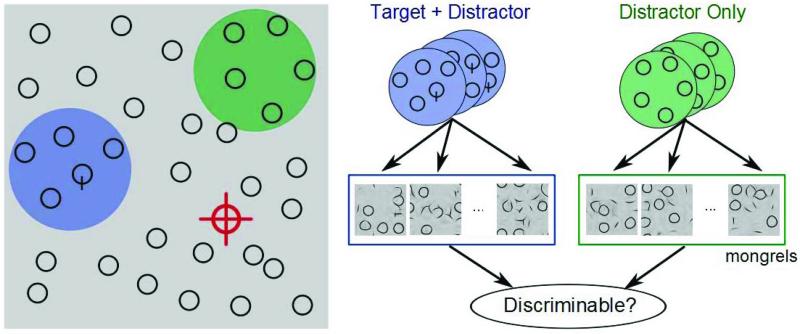Figure 2.
(a) In visual search, we propose that on each fixation (red cross), the visual system computes summary statistics over a number of local patches. Some patches contain a target and distractors (blue), whereas most contain only distractors (green). The job of the visual system is to distinguish between promising and unpromising peripheral patches and to move the eyes accordingly. (b) We hypothesize, therefore, that peripheral patch discriminability, based on a rich set of summary statistics, critically limits search performance. To test this, we select a number of target + distractor and distractor-only patches, and use texture synthesis to generate a number of patches with the same statistics (“mongrels”). We then ask human observers to discriminate between target + distractor and distractor-only synthesized patches, and examine whether this discriminability predicts search difficulty. Figure originally published in Rosenholtz (2011).

